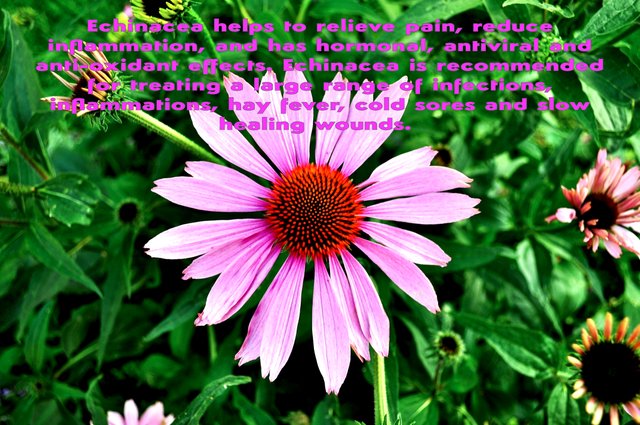
This post looks at the immense benefits which plants have for individuals. If there is one plant image which has come to signify herbal remedies since the 1990s, it would be the purple coneflower of echinacea. Splashed on supplements, chemist walls, natural healing centres, echinacea was the best-selling herb of the 1990s. Every year seems to see the mass explosion of drug-resistant bacteria and viruses that modern medicine just cannot seem to nail. Plants, particularly herbs, offer our greatest hope.
So why is it that plant therapies could work where pharmaceutical companies are failing? Complexity in nature is a fine thing. Pharmaceutical companies rely on incomplete scientific and market-driven solutions, to produce patentable isolates which are quick, efficient and cost-effective to market. For example, penicillin has one chemical constituent ‘penicillin’. Bacteria that reproduces so rapidly may easily discover a way around that one mechanism. In contrast, plants have much more complexity. They have had tens of 1000's of years to evolve their complex chemical compounds that work together to produce strong and effective medicines.
This complexity makes it hard for bacteria to bypass the plant medicines actions. Echinacea’s complexity makes it a potent healer - echinacea has complexity.
The plant contains many chemicals that play a part in its therapeutic effects, including polysaccharides, glycoproteins, alkamides, volatile oils, and flavonoids. Echinacea was extremely valued as a medical herb by Native Americans and early settlers there, who treated weeping wounds, boils, abscesses, and snakebites. There are nine types of echinacea of which two are used medicinally: Echinacea Angustifolia and E. Angustifolia, the narrow leaf form and which is the most cited in herbal medicine work as it is considered more potent.
E.purpurea has a wide leaf and is the most typical as it is faster and easier to grow. There are multiple lab and animal studies which suggest that echinacea also relieves pain, reduces inflammation, and has hormonal, antiviral and anti-oxidant effects. For that reason, echinacea is recommended for treating a large range of infections, inflammations, hay fever, cold sores and slow healing wounds. The effects on colds and influenza are unclear with lots of for and against studies. However, it appears the quality of the plant extract appears to be the greatest area for dispute.
The way adults should take echinacea according to the University of Maryland Medical Center is as follows: For general immune system stimulation, during colds, influenza, urinary bladder infections or upper respiratory system infections, take the following three times daily until you are feeling better, but not for more than 7 to 10 days:
1-2 grams dried root or herb, as tea –
2-3 ml of standardised tincture extract –
6-9 ml of expressed juice -
300 mg of standardised, powdered extract containing four percent phenolics -
tincture: 1-3 ml -
Stabilised fresh extract: 0.75 ml -
Apply creams on slow healing wounds as needed. Persons with a compromised immune system should not take echinacea due to possible drug interactions.
The FDA hasn't assessed the statements. The information is provided for informational purposes only. It's not intended to substitute medical advice or diagnosis by your doctor or other medical professionals. These herbs and products aren't meant to diagnose, treat, prevent or cure any illness. Please always consult your healthcare professional.